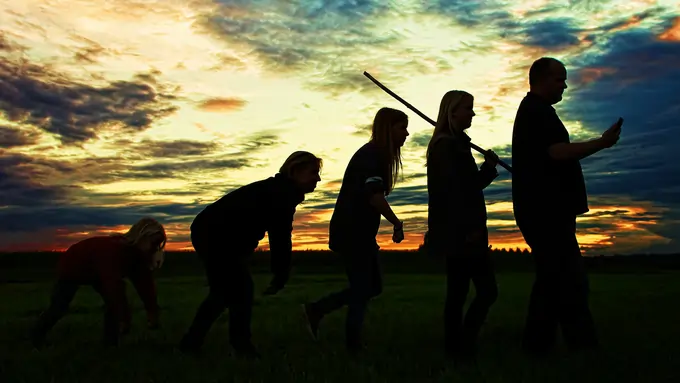
Human Gathering Cult
Ever wondered what makes a human gathering cult tick? Dive into this bizarre world where people come together for the most peculiar reasons. From quirky rituals to intense bonding, a human gathering cult offers a deep dive into the human psyche and our need for connection. Intrigued yet?
Introduction
Have you ever wondered what draws people into human gathering cults? These groups have fascinated and puzzled society for generations. In this article, we’ll explore the world of cults, shedding light on their inner workings and impact on individuals and communities.
Human gathering cults are a complex and multifaceted phenomenon that has captured the attention of researchers, psychologists, and the general public alike. Understanding these groups is crucial in today’s world, where social media platforms and online forums can serve as fertile ground for cult recruitment.
As we delve into this topic, we’ll examine the history, characteristics, and psychological factors that contribute to the formation and persistence of cults. We’ll also look at some notorious examples and discuss ways to protect yourself and your loved ones from falling under their influence.
Definition and History of Cults
A human gathering cult is a close-knit group led by someone charismatic, often with unusual beliefs. These groups have been around forever, drawing folks in with promises of belonging. Over time, they’ve shown up in tons of ways, from ancient rituals to modern-day movements. Fascinating stuff!
What is a Cult?
A cult is typically defined as a group that exhibits excessive devotion to a person, idea, or thing. These groups often isolate themselves from mainstream society and are led by a charismatic leader who exerts significant influence over their followers.
Cults often target vulnerable individuals, offering them a sense of belonging and purpose that they may be lacking in their lives. However, this sense of community often comes at a high price, involving psychological manipulation and sometimes even financial exploitation.
A Brief History of Cults
Cults throughout history have taken many forms, from religious movements to political organizations. Some of the earliest recorded cults date back to ancient civilizations, where mystery religions and secret societies flourished.
In more recent times, the 20th century saw a surge in cult activity, particularly in the 1960s and 1970s. This period, marked by social upheaval and a search for alternative lifestyles, provided fertile ground for cult recruitment.
Characteristics of Human Gathering Cults

Human gathering cults often share several common characteristics that set them apart from other social groups. Understanding these traits can help in identifying potentially dangerous organizations.
Common Characteristics
- Charismatic Leadership: A charismatic leader who claims special knowledge or powers
- Isolation: Cults often isolate members from friends, family, and society
- Us vs. Them Mentality: Promoting a strong group identity and cohesion
- Mind Control: Using techniques like love bombing and indoctrination
- Financial Commitment: Often requiring members to give up their possessions or money
The Psychology Behind Cults
The appeal of cults lies deep within human psychology. Individuals seeking a sense of purpose in their lives may find the structure and certainty offered by cults attractive.
Cult leaders often exploit basic human needs, such as the desire for belonging, security, and meaning. By providing a strong sense of community and a clear set of beliefs and practices, cults typically revolve around fulfilling these needs – at least on the surface.
Notable Human Gathering Cults
Let’s examine three infamous cults that have left a significant mark on history and public consciousness.
The People’s Temple
Led by Jim Jones, the People’s Temple is perhaps one of the most notorious human gathering cults in modern history. Initially founded as a church promoting social justice, it devolved into a totalitarian regime that ended in mass suicide in 1978.
Heaven’s Gate
Heaven’s Gate was a UFO religious cult founded in the 1970s. The group believed that by leaving their earthly bodies, they would ascend to a higher level of existence. Tragically, this belief led to a mass suicide of 39 members in 1997.
The Manson Family
The Manson Family was a cult led by Charles Manson in the late 1960s. This group shocked the world with a series of brutal murders, including that of actress Sharon Tate. The case continues to fascinate and horrify people to this day.
The Impact of Cults on Individuals and Society
The effects of cult involvement extend far beyond the individual members, rippling out to affect families, communities, and sometimes entire societies.
Psychological Impact on Members
Members may experience a range of psychological effects, including:
- Loss of personal identity
- Difficulty making decisions independently
- Anxiety and depression
- Post-traumatic stress disorder (PTSD)
Societal Repercussions
Cults can have broader impacts on society, such as:
- Erosion of trust in religious or spiritual organizations
- Strain on social services when helping former cult members reintegrate
- Legal and ethical challenges in regulating cult activities
The Process of De-radicalization and Recovery
The process of de-radicalization and recovery starts with understanding realities. Cults are often designed to manipulate and control members by setting them apart from mainstream culture.
They know just how to attract and retain members, promising what cults often offer: community and a sense of purpose.
Providing valuable insights into the dynamics surrounding human gathering is crucial. It helps prevent individuals from falling prey to the dangers posed by cults.
Leaving a cult can be challenging due to the intense psychological bonds formed within the group. However, with proper support, recovery is possible.
Steps Towards De-radicalization
- Recognizing the manipulation
- Seeking professional help
- Rebuilding personal identity
- Reconnecting with family and friends
- Developing critical thinking skills
Support Systems and Resources
There are numerous organizations dedicated to helping former cult members, offering counseling, support groups, and resources for reintegration into society.
How to Identify and Protect Against Cult Influence
Want to know how to spot and protect yourself against cult influence? First, recognize the group’s ideology. Cults employ various tactics to recruit and retain members, often by debunking myths about mainstream beliefs and offering a sense of belonging. Check out an informative blog for an in-depth view of their belief systems.
A cult requires you to accept their rigid ideology without question. Remember, a gathering cult is a group aiming to provide a false sense of purpose to their members. But understanding the realities behind human gathering cults can help debunk myths and misconceptions. Informed awareness is crucial to steer clear of these traps.
It’s fascinating how individuals join cults for the promise of belonging. However, cults may also engage in illegal activities and employ manipulation tactics to control members. Stay aware of these cult dynamics so you can make informed choices and protect yourself from being sucked into these potentially harmful groups.
Awareness is key in protecting yourself and others from falling prey to cults.
Warning Signs of a Potential Cult
- Charismatic leader claiming divine authority
- Pressure to cut ties with family and friends
- Demands for significant financial contributions
- Discouragement of critical thinking or questioning
- Promises of special knowledge or enlightenment
Tips for Protection
- Develop strong critical thinking skills
- Maintain diverse social connections
- Be wary of groups that demand absolute loyalty
- Research any group thoroughly before getting involved
- Trust your instincts if something feels off
Conclusion
Understanding human gathering cults is crucial in today’s interconnected world. By educating ourselves about the tactics and appeal of these groups, we can better protect ourselves and our communities from their harmful influence.
Remember, cults often target individuals during vulnerable periods in their lives. By fostering strong communities and promoting mental health awareness, we can reduce the allure of these manipulative groups.
Stay informed, think critically, and don’t be afraid to reach out for help if you or someone you know may be involved in a cult-like situation. Together, we can work towards a society that’s more resilient to the dangers posed by human gathering cults.
FAQs
What is the group the human gathering?
The Human Gathering is not a cult, but rather a professional networking organization. It hosts events and conferences aimed at bringing together influential individuals from various fields. Unlike cults, it does not seek to control its members or isolate them from society.
What are the benefits of the human gathering?
The Human Gathering offers networking opportunities offered by the human gathering events, including:
- Connecting with industry leaders
- Attending educational seminars
- Potential business collaborations
- Personal growth through shared experiences
However, it’s important to note that this organization is distinct from the human gathering cults discussed in this article, which often have harmful intentions and practices.
| Aspect | Human Gathering (Network) | Human Gathering Cults |
|---|---|---|
| Purpose | Professional networking | Control and manipulation |
| Leadership | Organizers and speakers | Charismatic, authoritarian leader |
| Member autonomy | Maintained | Often compromised |
| Societal interaction | Encouraged | Often discouraged or restricted |
| Financial expectations | Event fees | May demand significant contributions |
Remember, while networking groups like The Human Gathering can offer valuable professional connections, it’s always important to approach any organization with a critical eye and maintain your personal autonomy.




